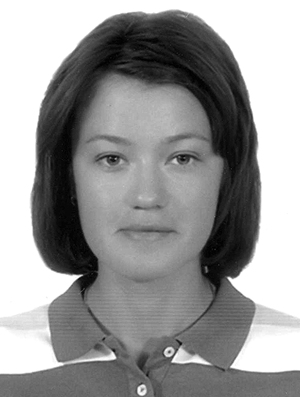The Correlation of Specifics of Hemispheric Asymmetry and Choosing the Way How to Move Legs at the Initial Phase of Learning Swimming
Фотографии:
ˑ:
D.A. Lavrent'eva, postgraduate
A.Yu. Aleksandrov, associate professor, Ph.D.
Moscow State Academy of Physical Culture, Malakhovka
Key words: education, swimming, hemispheric asymmetry.
Bilateral asymmetry of the locomotor system is among the peculiarities of the cerebral morphological organization during motor activity. Studies of a number of scientists have shown that the individual profile asymmetry (IPA) is the basis of individual characteristics of motor activity.
There is a significant amount of information on initial teaching swimming to different age groups In the modern methodology of teaching swimming.
The purpose of the present study was to reveal the relations between the choice of the footwork structure in the water at the initial phase of learning to swim with the hemispheric asymmetry of trainees.
The comparison of results of the selection of the swimming technique by students and children showed that, unlike children, more students have chosen the simultaneous structure of working leg movements and only a third - the alternate structure of footwork, which is twice less compared with children.
Such changes in the choice of the structure of footwork in learning swimming, depending on the age of the student, is likely related to the amount of the motor experiences, accumulated by the subjects of the study, however, this assumption needs more scientific research. In the peer-reviewed literature on swimming we have not found an answer to this question.
References
- Alexandrov, A.Yu., Malygin, L.S. Learning to swim using original methods: teaching aid. Ed. 1 / A. Alexandrov, L.S. Malygin. – MSAPC, 2007. – 44 P. (In Russian)
- Berdichevskaya, E.M. Coordination characteristics of human voluntary movements in connection with individual asymmetry profile / E.M. Berdichevskaya // Fizicheskaya kul'tura, sport - nauka i praktika. – 2004. – № 1-4. – P. 45–51. (In Russian)
- Bulgakova, N.Zh. Swimming: textbook for universities / Ed. by N.Zh. Bulgakova. – Мoscow: Fizkultura i sport, 2001. – 400 P. (In Russian)
- Ganchar, I.L. Swimming: theory and methodology of teaching : textbook / I.L. Ganchar. – Monograph: Chetyre chetverti, Ekoperspektiva, 1998. – 352 P. (In Russian)
- Zernov, V.I. Swimming: learner's guide. Workshop in the section "Methodology of teaching" (700 exercises to teach swimming skill) / V.I. Zernov, V.G. Yaroshevich. – Monograph: GIPP, Prompechat', 1998. – 88 P. (In Russian)
- Kogan, A.B. On the role of functional lateralization in the formation of complex motor acts in athletes / A.B. Kogan, A.B. Poroshenko, P.N. Ermakov, G.A. Kuraev / Fiziologiya cheloveka. – 1982. – № 6. – P. 989–993. (In Russian)
- Lebedev, V.M. The symmetry - asymmetry display in certain body functions of an athlete / V.M. Lebedev // Teoriya i praktika fizicheskoy kultury. – 1970. – № 10. – P. 23–26. (In Russian)
- Lobzin, O.V. Methodology to determine the functional asymmetry in a person / O.V. Lobzin // Voprosy morfologii, fiziologii, biokhimii i aviatsionnoy meditsiny. – Мoscow, 1968. – P. 106–108. (In Russian) Sologub, E.B. Sport genetics: study guide for higher educational institutions of physical culture / E.B. Sologub, V.A. Tajmazov. – Мoscow: Terra-Sport, 2000. – 127 P. (In Russian)











